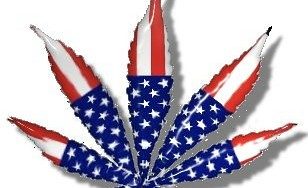
Federalism In Action: Gradualism.
The movement to legalize marijuana and the state-federal conflict that has accompanied it is the perfect example of federalism in action. Changes in this area of law have come from voters at the ballot box and state legislatures. A gradual but consistent change in public opinion on the issue over the past 20 years, especially by younger voters, has caused a fairly consistent state-by-state path of legalizing pot.
Marijuana, or cannabis, entered the United States in large amounts with the Mexican immigrants who came after the Mexican Revolution of 1910. Smoking the plant was part of their culture. Soon, growing awareness of the mind-altering drug and for its potential danger grew. States, exercising their police powers, began outlawing marijuana as early as 1910.
As the substance moved further into the country, more states followed suit in criminalizing it. Critics not only denounced the drug, but also demonized the Mexican immigrants, making the two “evils” synonymous. A short-lived nativism accompanied the criminalization effort while likely exaggerating the drug’s effects. For example, critics declared pot caused users to commit sexually-aggressive acts, murders, theft, and other acts of violence. The federal government first acted with a 1932 policy, the Uniform State Narcotics Act, which strongly urged states to make marijuana and other drugs illegal. Meanwhile a propaganda campaign that reached a peak with the release of the film Reefer Madness brought attention to the drug and alleged that cannabis caused all kinds of derangement on users. The movie’s over-dramatic reenactments perhaps convinced theater-goers in the 1930s, but today the cult-classic has become an almost-comedy.
By the end of the 1930s, most states and the Congress had criminalized marijuana. Drug enforcement, other than interstate drug trafficking, was largely handled by state and local police. The 1960s counter culture brought further attention to drug use and abuse. By 1970, the Controlled Substances Act, a comprehensive federal drug policy in the middle of President Richard Nixon’s war on drugs, was the first federal law with any teeth to enforce and heavily punish marijuana dealers and users. The law categorized heroin, cocaine, and other illegal substances, and placed marijuana in the most severe category with no medical benefits. At the time, the Gallup organization found that only about 12 percent of citizens thought it should be legal . . .
As voters in 2016 determined the next president, voters in seven of eight states voted to legalize—some medicinal, some recreational—only Arizona’s failed. Fourteen of the 29 localities that have legalized since 1996 have done so by ballot initiative.
The 1970 Controlled Substances Act still remains on the federal law books.
For an up-to-date, state-by-state information regarding marijuana policy, go to the National Conference of Sate Legislatures
Questions
1. When did states start regulating or criminalizing cannabis and marijuana?
2. When did Congress make laws regarding the drug?
3. Examine the US map (linked above) with current state law regarding marijuana status. What’s one trend or observation you can make?
4. Should the federal or state government have ultimate authority with marijuana policy? Why?
Photo/Image: “Stars and Leaves!” by ShereeKrider is licensed under CC BY-NC-SA 2.0